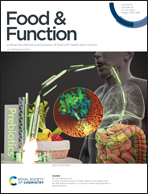Unraveling the impact of viscosity and starch type on the in vitro starch digestibility of different gels
Abstract
Starch is one of the most important carbohydrates that is present in many foods. Gelatinization is an important property of starch, associated with physical changes that promote an increase in viscosity. The objective of this research was to understand how the viscosity of starch gels affects their hydrolysis and whether that effect was dependent on the type of starch. Different gels (corn, wheat, and rice) with variable or constant viscosity were analyzed using diverse methodologies to determine the changes in the pasting behavior. A rapid force analyzer, a vibration viscometer and a rheometer were used to differentiate the gels based on the starch source and concentration. At a fixed starch concentration, corn gel displayed the highest viscosity, slowing the enzymatic starch hydrolysis. The higher viscosity of those gels prepared with a fixed starch concentration significantly enhanced the slowly digestible starch (SDS) and reduced the kinetic constant (k). Nevertheless, gels with constant viscosity (550 mPa s) showed comparable hydrolysis kinetics, obtaining similar SDS, total hydrolyzed starch and k. The correlation matrix confirmed the relationship between k and gel viscosity (r = −0.82), gelatinization rate (α-slope) (r = −0.87), breakdown (r = −0.84) and elastic modulus (G′ 37 °C) (r = −0.73). Therefore, these parameters could be used as predictors of the hydrolysis performance of starch gels as well as in reverse engineering for the design of healthy foods.



 Please wait while we load your content...
Please wait while we load your content...